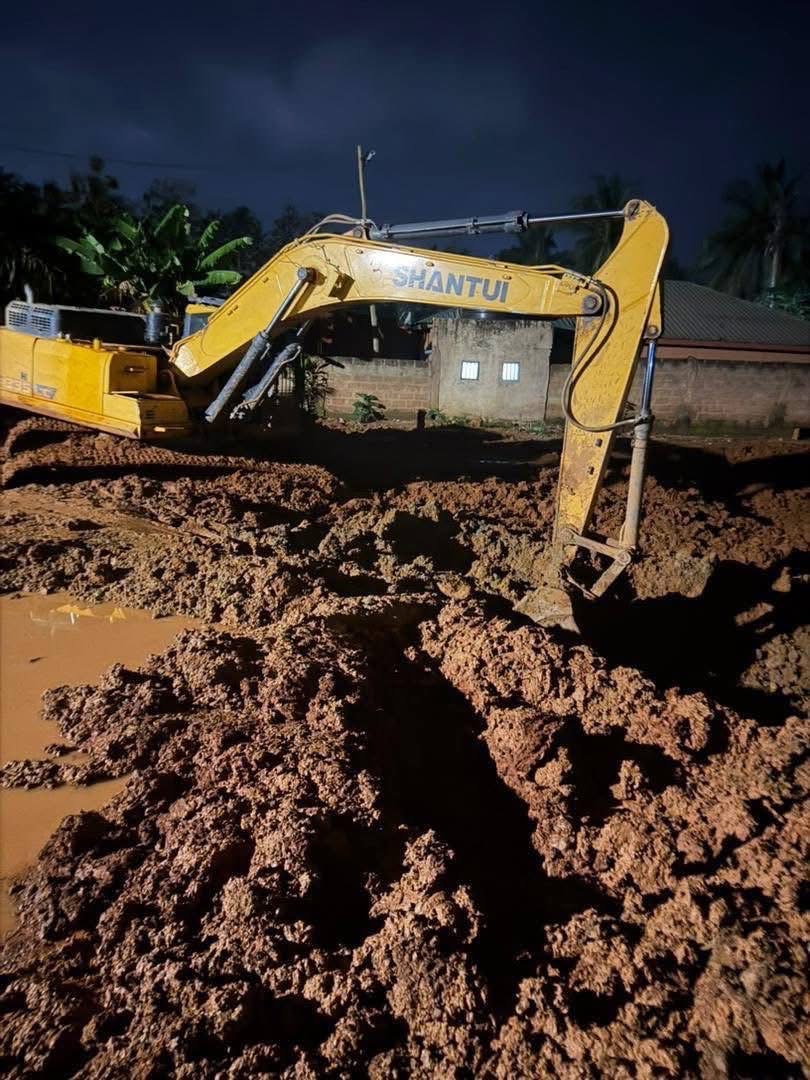Ghana News
NAIMOS Confirms 36 Arrests in Osino Illegal Mining Sweep

In the quiet hours before sunrise, Ghana’s National Anti-Illegal Mining Taskforce, known as NAIMOS, struck hard against illegal mining in Osino. They arrested 36 suspects in one swift move. This raid highlights the growing fight against galamsey, the local term for small-scale illegal gold extraction that’s harming the Eastern Region.
Osino sits in a hotspot for these activities. Rivers run muddy from the digging, and forests shrink fast. NAIMOS leads the charge to protect land and water. Their job? Stop these operations that poison the environment and steal resources. This dawn operation shows real action. It sends a clear message: illegal mining won’t stand.
The team works under the government’s push to save Ghana’s natural wealth. Galamsey has wrecked sites across the country. But in Osino, the damage hits close to home for locals. This bust could mark a turning point. Let’s break down what happened and why it matters.
The Pre-Dawn Raid: Execution and Scope of the NAIMOS Operation Methodology of the Dawn Sweep
NAIMOS picked dawn for the raid to catch miners off guard. They moved in silence under the cover of darkness. Teams split up to cover multiple sites at once.
Coordination was key. Security forces trained for weeks. They used intel from locals and patrols. In Osino, the target was a cluster of hidden pits near the town’s edge. Miners thought they were safe in the early hours.
The sweep lasted just minutes. No shots fired. Everyone was arrested without a fight. This surprise element worked like a well-oiled machine.
Equipment and Assets Seized
Officers grabbed heavy gear from the sites. Excavators stood idle, their buckets caked in mud. Water pumps lay tangled in hoses, ready to suck dry the streams.
They also took changfans—simple wooden sluice boxes for gold washing. Fuel drums and picks were added to the haul. One site had a generator humming away.
No phones or maps turned up this time. But the haul shows the scale. These tools fuel galamsey’s spread.
Immediate Outcomes: Arrest Figures and Documentation
Thirty-six suspects now face questions. Most are local men, some from nearby towns. NAIMOS profiled them on the spot—names, ages, and roles noted.
They herded everyone to a secure spot. Basic checks followed: no weapons, just dirty clothes from the pits. Documents started flowing—statements and photos.
So far, no charges filed. Screening continues at a regional office. Prosecutors review the evidence next. This step ensures no one slips away.
Analyzing the Environmental Damage at the Osino Mining Sites’ Impact on Local Water Bodies
Illegal digs in Osino dump silt into nearby rivers. The Birim River, a key water source, runs thick and brown. Mercury from gold processing seeps in too, killing fish and plants.
Locals can’t drink from streams anymore. Turbidity blocks sunlight for aquatic life. A quick check by NAIMOS found high chemical levels—way above safe limits.
Government reports back this up. One study showed pH levels off the charts in affected areas. Clean water grows scarce. Families boil what they get, but it’s not enough.
Land Degradation and Deforestation
Pits scar the earth like open wounds. Topsoil strips away, leaving bare rock. In Osino, acres of forest vanished for access roads.
Trees felled for support now rot in heaps. NAIMOS saw fresh clearings—stumps everywhere. The ground erodes fast in the rains, forming gullies.
Compare it to untouched spots nearby. Green hills stand tall, while mining zones look like moon craters. Photos from the raid capture this stark change. Recovery could take years, if ever.
Regulatory Framework and Legal Repercussions for Illegal Miners Current Legislative Stance Against Galamsey
Ghana’s Minerals and Mining Act bans unlicensed digs. Section 99 spells out jail time for offenders—up to 15 years. Fines hit hard too, in cedis and seized assets.
The government ramped up rules last year. An executive order bans certain equipment nationwide. NAIMOS enforces this with zero tolerance.
These laws aim to guard resources. Illegal miners break them for quick cash. But the penalties match the harm done.
Judicial Process Following Major Arrests
The 36 will enter the court soon. First, build the case—photos, witness talks, and lab tests on gear. Then, it heads to a magistrate.
Challenges pop up. Evidence from wet sites fades quickly. Courts juggle many cases, slowing things down.
Past wins set examples. In 2022, a similar bust in the Ashanti Region led to 20 convictions. Fines paid, and sites reclaimed. This Osino raid could follow suit.
Community Response and Future Deterrence Strategies Local Perspectives on the Operation
Osino folks cheer the arrests. Many tire of poisoned wells and lost farms. “It’s about time,” one elder said to NAIMOS reps.
But not all agree. Some families rely on mining income. Job loss stings, especially with few options. Tensions rise between green goals and daily needs.
Traditional leaders back the crackdown. They met NAIMOS post-raid, sharing tips on hideouts. Community watch groups form to report tips.
Actionable Steps for Sustainable Mining Enforcement
Boost intel with drones over hotspots. Train locals as spotters for early warnings. Apps could let folks report digs safely.
NAIMOS locks seized gear in guarded yards. Excavators get tagged—no resale is easy. This stops quick restarts.
Partner with chiefs for education. Teach legal mining paths. Long-term, create jobs in eco-tourism or farming. These steps build lasting peace.
Conclusion: A Firm Stance Against Environmental Illicit Activities
The NAIMOS dawn operation in Osino nabbed 36 suspects and shut down key sites. It exposed galamsey’s toll on water and land. This coordinated hit proves authorities mean business.
Ghana’s resources hang in the balance. Sustained raids like this protect rivers and forests for generations. Accountability drives change—no more free passes for destroyers.
Stay alert to these efforts. Support legal paths to gold. Together, we guard our shared home. What role will you play in this fight?
#GBCNews






jogjatoto login
November 8, 2025 at 3:38 pm
What I really liked is how easy this was to follow. Even for someone who’s not super tech-savvy, it made perfect sense.
jogjatoto alternatif
November 8, 2025 at 3:39 pm
This topic is usually confusing, but you made it simple to understand.
jalalive bola
November 8, 2025 at 5:12 pm
Thanks for taking the time to break this down step-by-step.
jalalive apk
November 8, 2025 at 5:32 pm
I hadn’t considered this angle before. It’s refreshing!